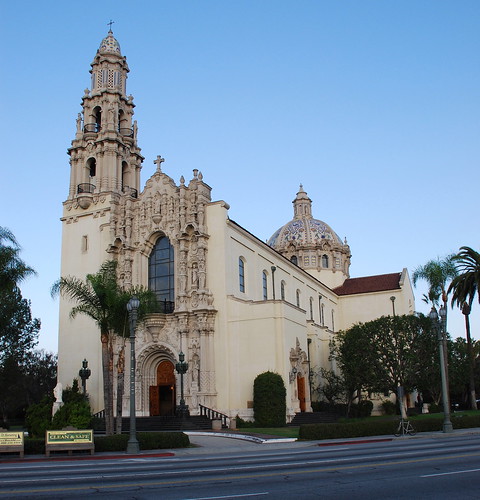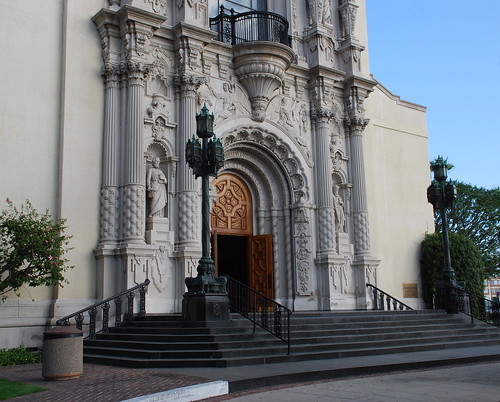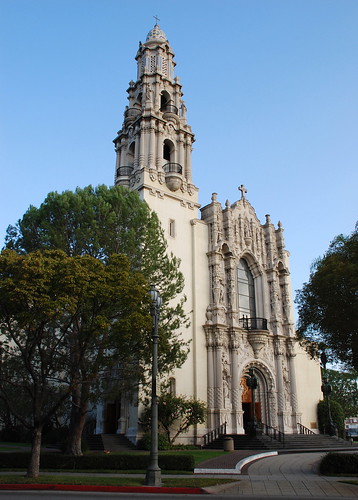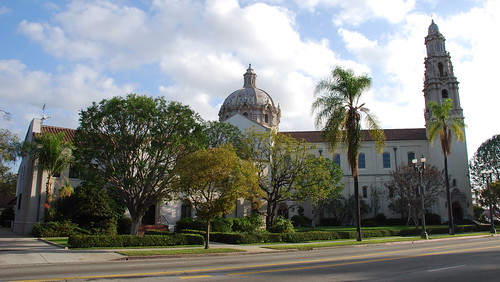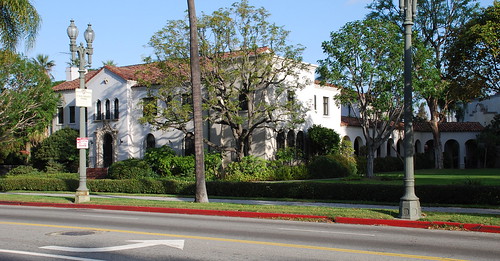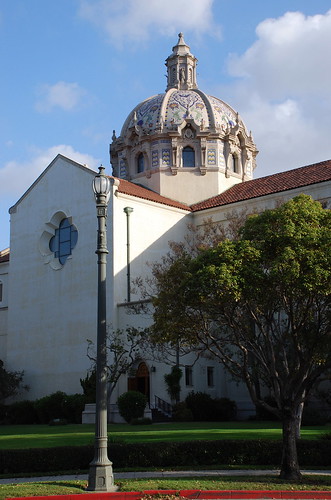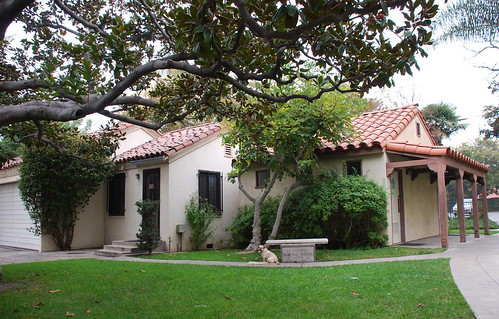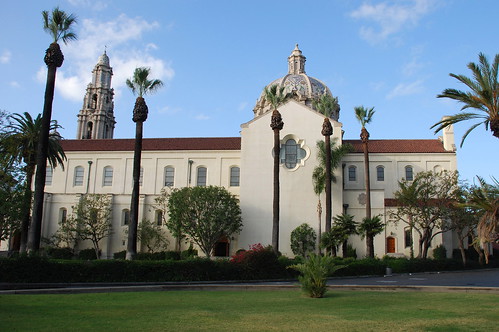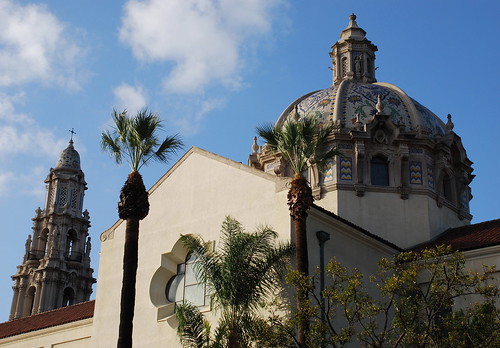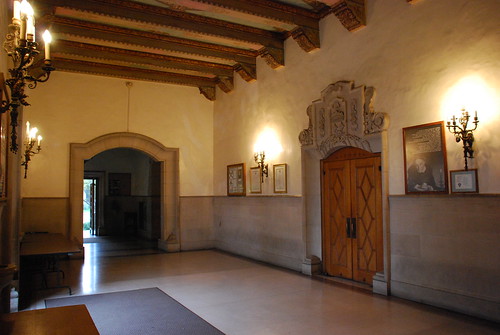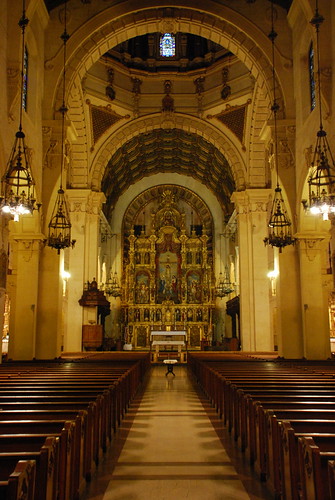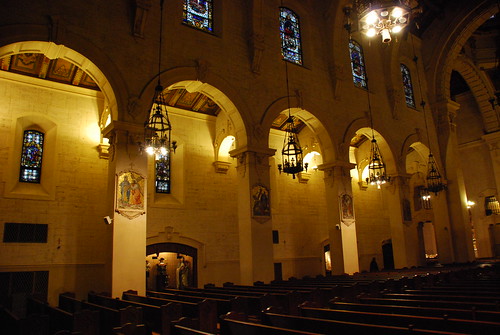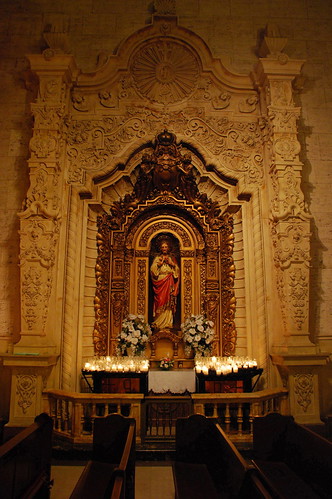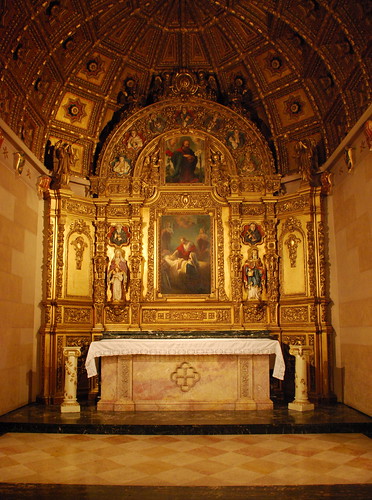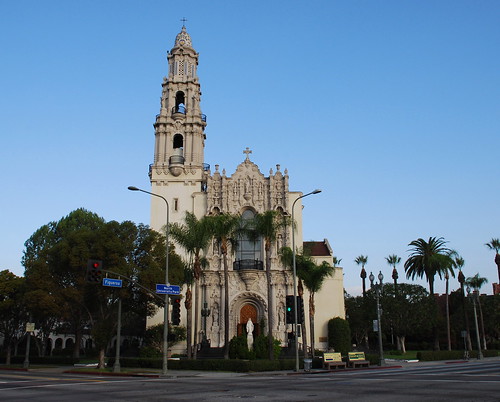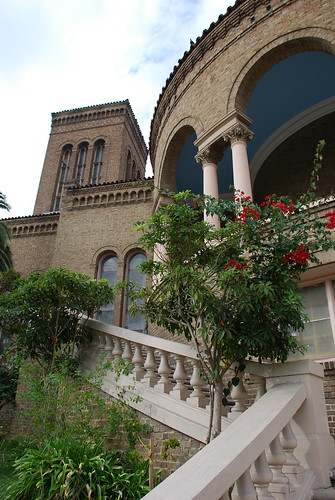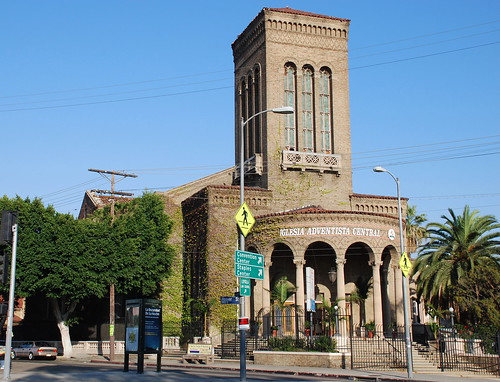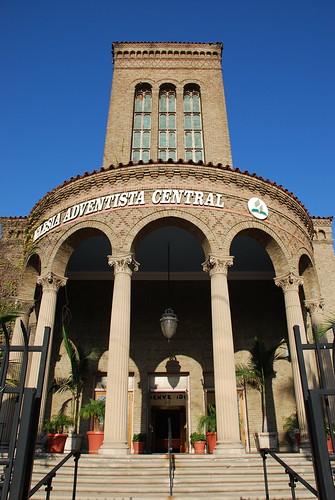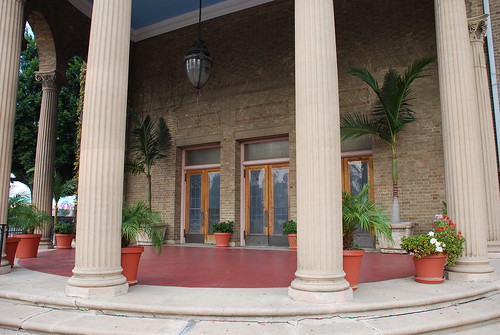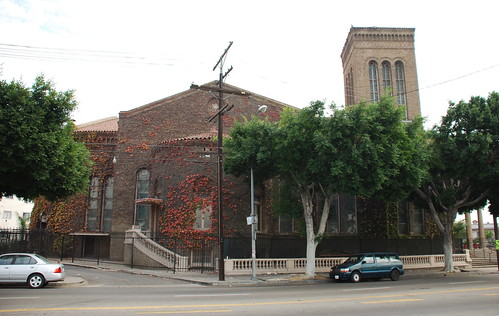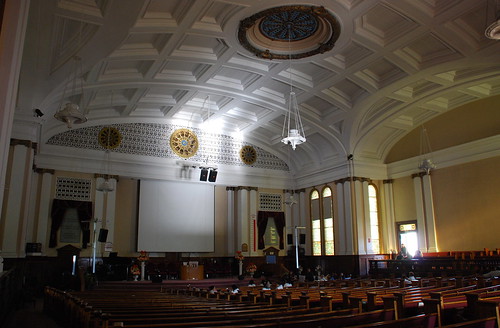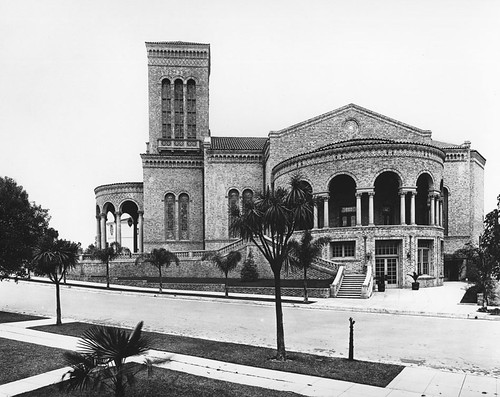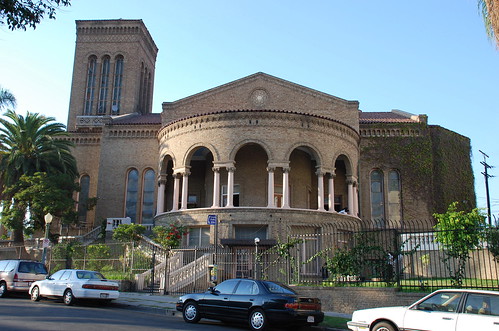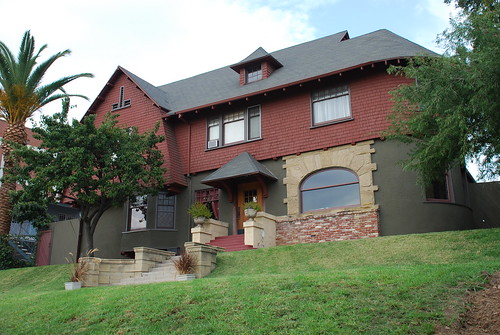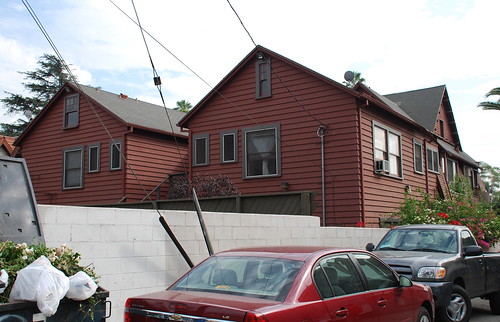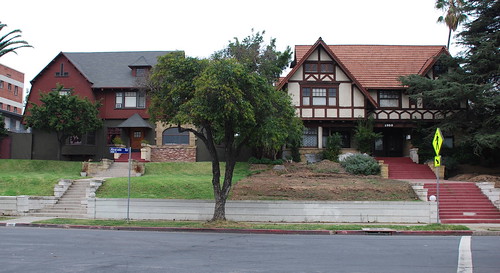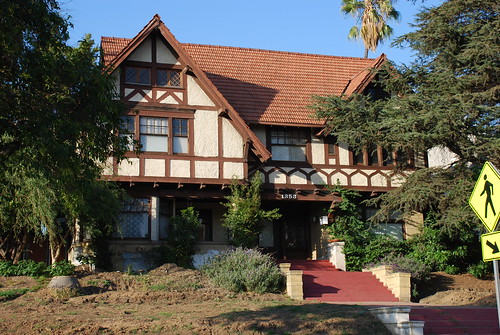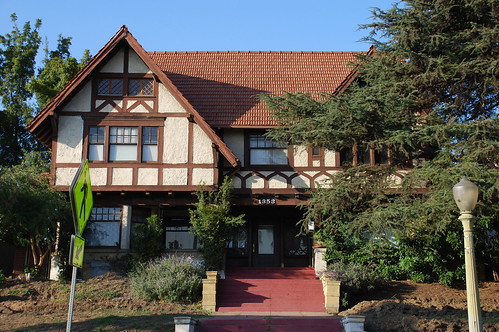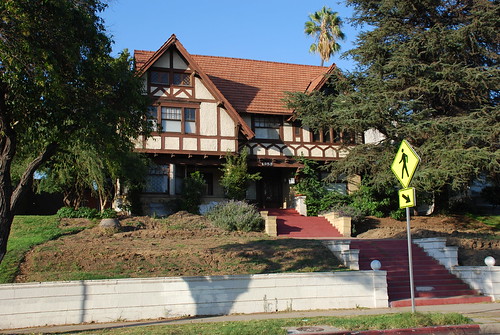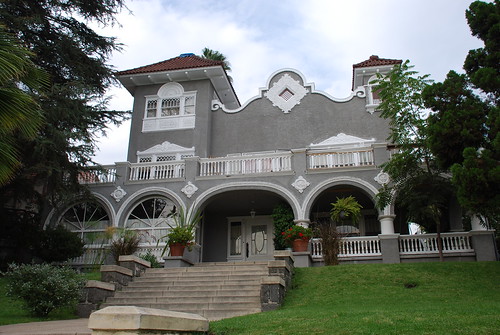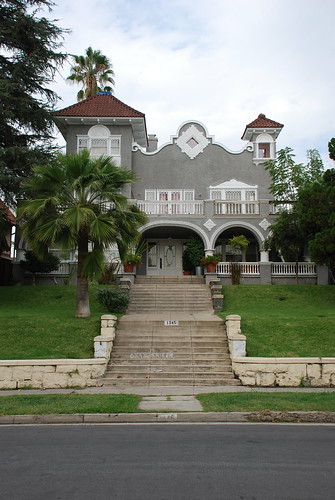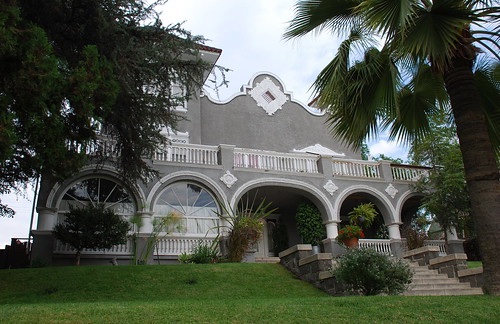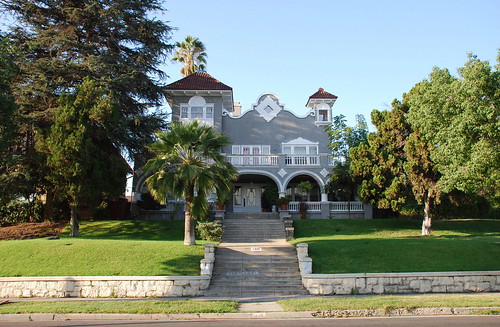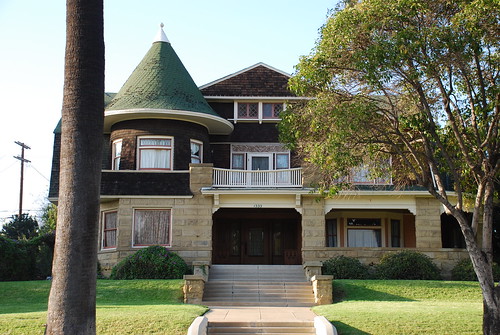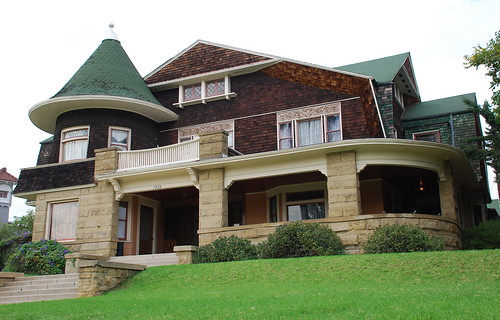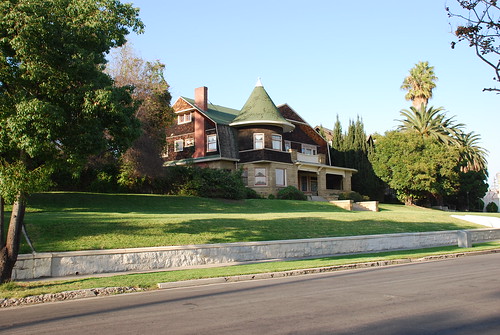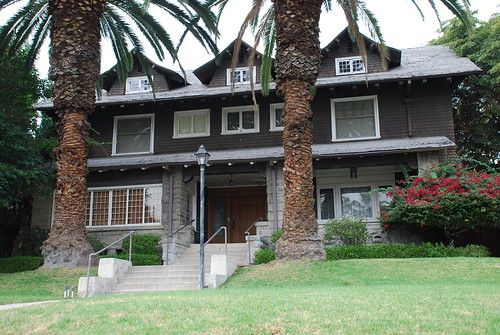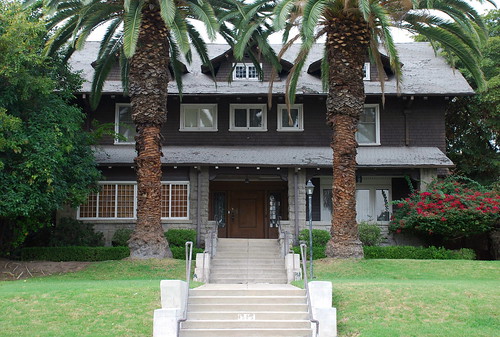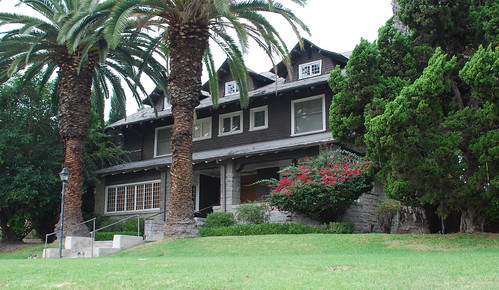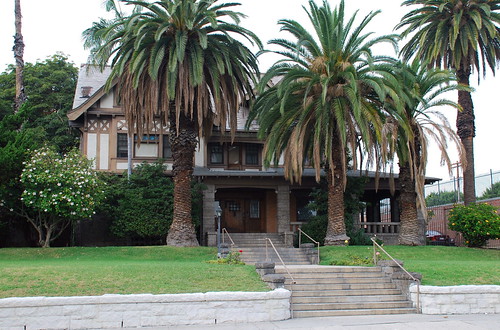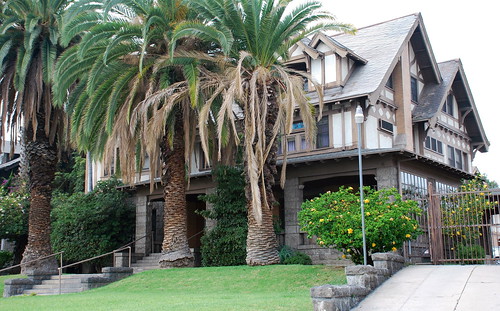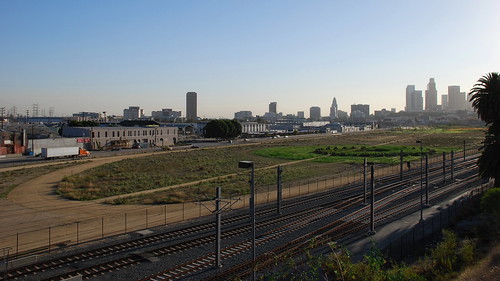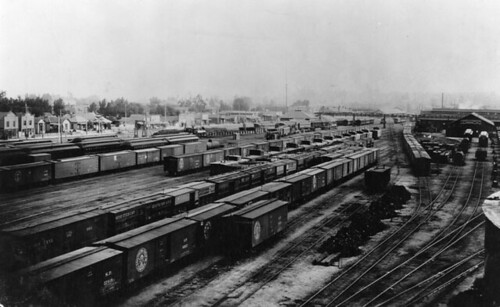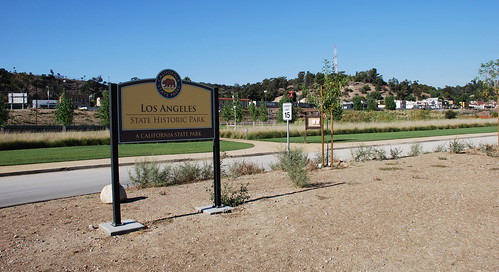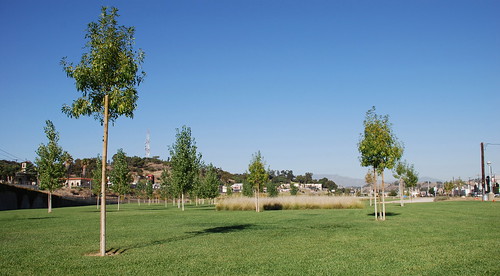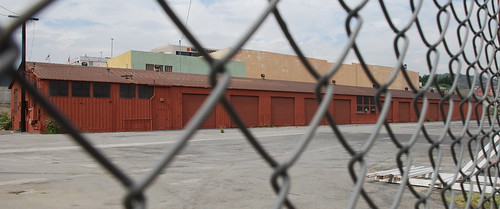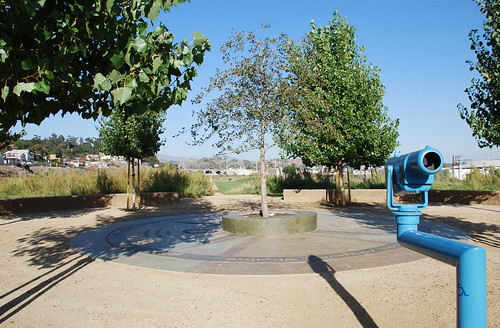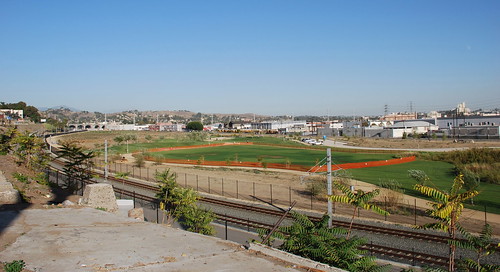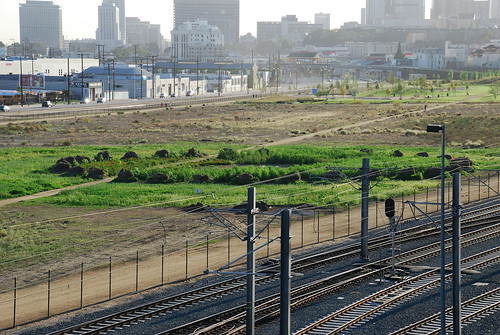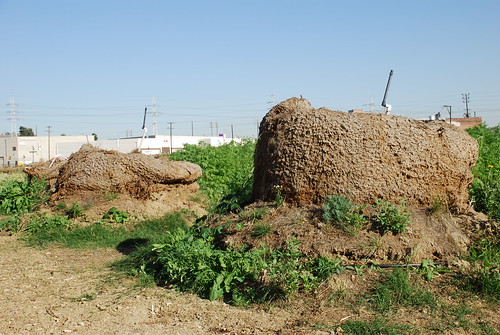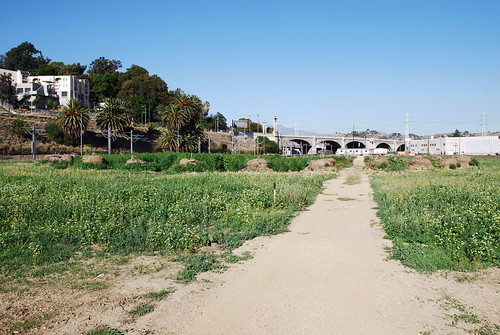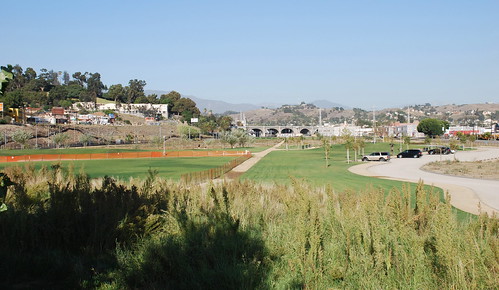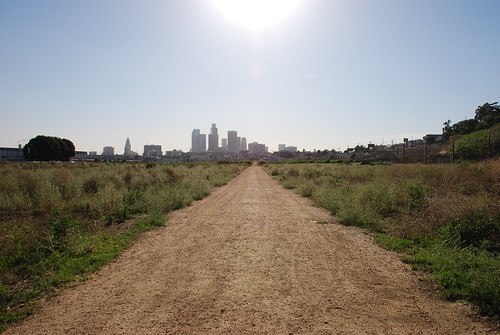St Vincent de Paul Church
1923 – Albert C. Martin
621 West Adams Boulevard – map
Declared: 7/21/71
St Vincent de Paul Church at the corner of Figueroa and West Adams received formal dedication on April 12, Easter Sunday, in 1925. Father Martin G. Hanley preached the sermon. That’s according to a contemporary L.A. Times account. Don Sloper, in Los Angeles’s Chester Place, says the first mass was held the Sunday before, with the Rt Rev. John J. Cantwell, bishop of the Diocese of Monterey and Los Angeles, presiding. So let’s say the church opened during the first half of April, 1925.
It was back in September, 1922, though, when Father J.H. MacRoberts, St Vincent’s pastor, announced gazillionaire Edward Doheny had pledged a quarter of a million dollars to the building of which at that time was planned to be a $500,000 church (it was later pegged at one million). “A large part of the other portion has been pledged as well.” The church had already owned the land for a couple of years. The Automobile Club of Southern California was at that time under construction across the street and the gated community of Chester Place and Doheny’s own mansion sat (and still sits) a couple yards to the west.
Bishop Cantwell and Rev. MacRoberts approved design sketches by Albert C. Martin in December, 1922.
Martin had designed L.A.’s first major Churrigueresque-style building, the Million Dollar Theater on South Broadway, in 1918. Martin was also part of the teams that designed Los Angeles landmarks City Hall (No. 150) and the May Company on Wilshire (No. 566).
For St Vincent’s, the architect was inspired by Bertram G. Goodhue’s California Building from the 1915 San Diego Exposition (it’s still there today, but now known as the Museum of Man in Balboa Park) as well as the Santa Prisca, a historic church in Tasco, Mexico.
Crews broke ground in 1923, while the majority of construction occurred throughout 1924. And, man, what a busy year for L.A. churches it was, too. According to a Los Angeles Times article from New Year’s Day, 1925, the city saw construction of 62 new churches that year. The new houses of the holy, at a cost of nearly $7.3 million, brought L.A.’s church tally to 412.
The Churrigueresque church is in the shape of a cross and sits at a 45-degree angle to the intersection, better providing diners at the Popeyes across Figueroa unobstructed views of the eighty-plus-year-old church.
While Ralph Adams Cram designed the interior, the interior ceiling decoration is by John B. Smeraldi. Just around that time, Smeraldi was also working on the ceilings at the Biltmore Hotel downtown. Busy guy.
The Wurster Construction Company’s E.M. Lukens reported the strength of that 44-foot concrete dome was tested by hanging sand bags from “the entire circumference of the dome to the weight of thirty pounds per square foot and an additional thirty pounds per square foot over one-half the circumference.” After two days, an additional ten tons was suspended from the center with no deflection noted.
The underside of the dome features eight paintings of Matthew, Mark, Luke, and John and their symbols: man; lion; ox; and eagle. (Sorry, no picture.)
You’ll also notice inside the church the reredos with ten saints and, again, the Four Evangelists. Then note the statue of St Edward to the left of the saints (he’s to the right of the statue of St Peter). See how not only does he show a resemblance to patron Edward Doheny, but he’s also holding a miniature model of the church. (Again, sadly, no picture.)
St Vincent de Paul Church has a seating capacity of 1,200.
Finally, since you’ve made it this far and have been so patient, St Vincent de Paul was a 17th-century French priest. Pope Clement XII beatified him in 1737, the patron of charitable societies.
Sources:
“Huge Sum Given for Building” Los Angeles Times; Sep 24, 1922, p. I5
“Sketches of New Church Approved” Los Angeles Times; Dec 10, 1922, p. V1
“Unusual Design in Church Plan” Los Angeles Times; Oct 12, 1924, p. E3
“Sixty-Two New Churches in 1924” Los Angeles Times; Jan 1, 1925, p. H10
“Easter Service Dedicates New Catholic Church” Los Angeles Times; Apr 13, 1925, p. A8
Don Sloper, Los Angeles’s Chester Place (Charleston SC, Chicago IL, Portsmouth NH, San Francisco CA: Arcadia Publishing, 2006)
Up next: The Korean Philadelphia Presbyterian Church
continue reading...
